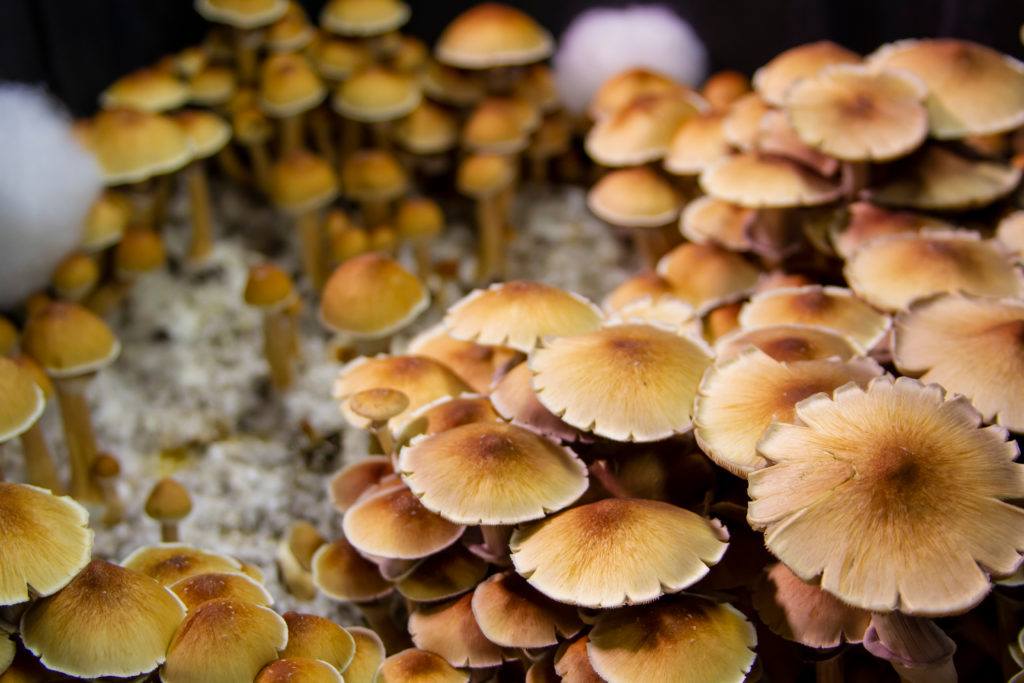
In 2019, Dr. Felix Blei and his research team announced that they had isolated new compounds from four species of magic mushrooms, including Psilocybe cubensis.1 Of course, the better-known compounds like psilocybin, psilocin, and baeocystin were present in the mushrooms, but also were some compounds called beta carbolines (ß-carbolines). This groundbreaking discovery has changed the magic mushroom paradigm for psychedelic researchers.
ß-Carboline Basics
ß-carbolines are naturally occurring alkaloids.2 They are most commonly known as components in the psychotropic beverage ayahuasca. Examples of the ß-carbolines in ayahuasca include harmine, harmane, and harmaline (note: ß-carboline is also another name for the compound norharmane).
Much of the effect of ayahuasca is due to the ability of ß-carbolines to inhibit MAO (monoamine oxidase) enzymes.2,3 This inhibition makes it possible for the psychedelic compound DMT (dimethyltryptamine, another compound in ayahuasca) to move out of the digestive system and enter the circulation.
The ß-Carbolines in Magic Mushrooms
Blei et al. analyzed extracts from P. cubensis, P. mexicana, P. cyanescens, and P. semilanceata. In the extracts, they identified the ß-carbolines cordysinin C, cordysinin D, harmane, harmol, norharmane, and perlolyrine. These compounds were previously isolated from fungi and plants in genera such as Cordyceps, Peganum, and Banisteriopsis,4 but this was a eureka moment in Psilocybe research history.
The Importance of Discovering ß-Carbolines in Magic Mushrooms
When it comes to understanding the effects and potential therapeutic applications of magic mushroom compounds, it’s not just about tryptamines anymore. Now scientists have a new path for further discovery. Consider some of what is already known about ß-carbolines. It deepens the complexity of the already challenging magic mushroom chemical landscape.
ß-carbolines are known to play a role in the development of essential tremor (uncontrolled shaking) and have been implicated in Parkinson’s disease.5 In contrast, a systematic review of the literature conducted by Ferraz et al. in 2019, indicated that ß-carbolines (harmane and harmine, in particular) might have antidepressant effects.6 The authors summarized their findings by saying,
In general, β-carbolines modulate 5-HT and GABA systems, promote neurogenesis, induce neuroendocrine response and restore astrocytic function, being effective when administrated acutely or chronically in different animal models, including chronic mild stress protocols.
Some of these effects of ß-carbolines come from their ability to inhibit the uptake of serotonin, dopamine, epinephrine, and norepinephrine via competitive inhibition of the receptors7,8
In 2018, a review article by Dai et al. focused on the occurrence, structural diversity, and biological activity of ß-carboline monomers and dimers.9 Their review found that some ß-carboline monomers have many effects, including antitumor, antiparasitic, and antiviral, as well as antioxidant, antidiabetic, and aphrodisiac activity. Interestingly, some ß-carboline dimers have a significantly higher level of bioactivity than their monomeric counterparts.
Further Research on ß-Carbolines From Magic Mushrooms
It’s unknown how ß-carbolines function in magic mushrooms and the ways they may contribute to the overall psychedelic effect. The discovery of these compounds in magic mushrooms will alter the path of psychedelic drug research, perhaps leading to the discovery of even more beneficial effects.

Hmm these inhibition of Monoamine oxidase A and SRI properties (dont surely know if uptake = reputake) , it may explain why antidepressant effect are more likely to occure after psylocibin mushrooms then after pure tryptamines available. Afterglow after shrooms is much more perceptible then after 4-HO-xxx (But still – it depends
A – Could you please point me to a reference showing how the antidepressant effect is more likely to occur after psilocybin mushrooms than after pure tryptamines? Same question regarding what you’re calling the “afterglow.” Is there a study comparing the mushrooms to a pure tryptamine in a controlled manner– presumably comparing pure psilocybin or an equivalent, like psilacetin to naturally occurring mushrooms? Regarding the beta-carbolines, I think that the authors of the paper were pretty clear that the concentrations found in their samples would not be expected to result in appreciable changes in the pharmacology. Nevertheless, there’s still an… Read more »
I haven’t seen any studies comparing whole mushrooms or whole mushroom extracts with pure psilocybin.. I know Hefter Institute has this study on their back-burner. This is the next important study to allow whole mushrooms for therapeutic use.. There is a obvious morphological and chemical complexity to all 100 plus species of psilocybin mushrooms, and although there must be overlap with indole-alkaloids among all species in the Psilocybe genus, I’m positive we will find many novel compounds among each species within this genus. These will contribute to the “entourage” effect for each unique species and even phenotypes. I am very… Read more »
From personal experience I have been able to taper my SSRI´s over the last 6 months now to the final dose of 7.5g which will end at the end of this week. I will then be free from these meds which have largely have had little effect on my depression over the last 5 years. I have been micro and macro dosing mushroom and will continue to enjoy them as medicine and recreational pleasure indefinitely
Chris Sladden, I would Like to know more about your experience. Were you in a study?